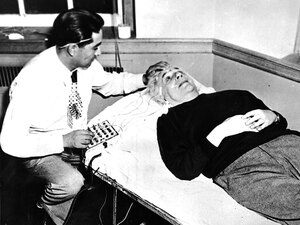 This first logo was designed by Ron Wayne, one of Apple’s three co-founders, and was only used for the Apple I computer. More of a picture than a logo, it portrayed the famous scene in which Isaac Newton is pondering gravity beneath an apple tree. Less than a year later, Steve Jobs, another co-founder, requested a redesign because he felt it was too intellectual and far too intricate to be stamped on computers.
This first logo was designed by Ron Wayne, one of Apple’s three co-founders, and was only used for the Apple I computer. More of a picture than a logo, it portrayed the famous scene in which Isaac Newton is pondering gravity beneath an apple tree. Less than a year later, Steve Jobs, another co-founder, requested a redesign because he felt it was too intellectual and far too intricate to be stamped on computers. The newer logo, created by art designer Rob Janoff, was far more simplistic - it featured a partially bitten apple striped with the colors of the rainbow in the wrong order. This served as Apple’s primary logo for 20 years until 1997 when Jobs decided to ditch the rainbow stripes for a solid-colored fruit.
Source: The Apple Museum









